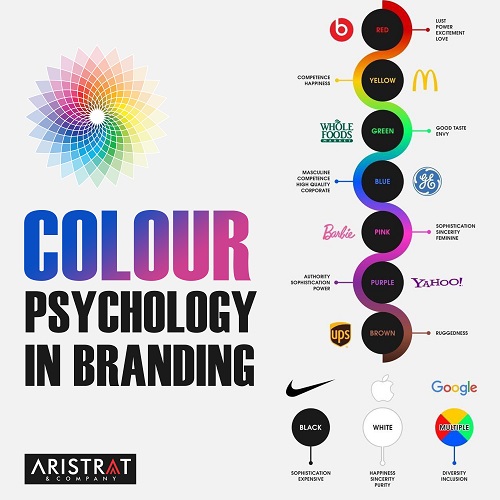Finding It Hard to Come Up with a Brand Strategy? Check out this Easy Guide.
Another talk about branding, right? Yes! The truth is as businesses keep coming up and trying to grow themselves, there’ll always be need for branding.
You see, branding is very key to the growth of your business and this goes beyond perception, it affects your marketing, thus bringing in sales as well. But then, let’s slow down a bit and analyze all these carefully.
Branding in simple terms refers to the way your customers perceive your business and equally how they relate to it. It has to do with the personality as well as the visual aspect. Of course, your business is inanimate but believe me it has a personality which covers its tone and voice hence the need for a brand strategy.
Now, a common and clear definition of brand strategy is a long-term plan for the development of a successful brand in order to achieve specific goals. A well-defined and executed brand strategy affects all aspects of a business and is directly connected to consumer needs, emotions, and competitive environments. Now you see how encompassing branding is and how it affects the entirety of your business.
Sadly, many people miss out on this and when they slap colors on a template to create a logo or run a few ads that always end with catchy taglines, they feel that branding is complete. However, that’s not how it works. Even Nike that is looked at nowadays as the King of branding with their catchy tagline of Just do it didn’t start today. They’ve come a long way and the consistency over the years is made possible through a well-thought-out brand strategy. Now you see why the strategy should be in place before the branding starts right.
So, here are 4 things to put in place when coming up with a brand strategy:
1. Set a goal: as with any thing you want to achieve, the first thing you should consider is your brand goal(s). Do you just want to create brand awareness, introduce a new product or service, or gain a chunk of the market from your competitors? Your answer to these questions determines the pace and way your brand strategy should go. Now you may be wondering how branding could have different goals yet a business remains consistent through it all. Let’s see how this works in the second point.
2. Be open to change: yes, you read right! Change is constant and as with your offering, marketing and sales strategy, your brand goal is sure to change over time. This in turn affects your brand strategy. But here’s the catch, in the midst of this, there should be some features that will always be associated with your brand. So even if at some point, you want to just boost your positioning and hold in the market, you don’t necessarily have to change the entire face of your brand. All you have to do is to tweak those parts that have a role to play in the market.
Let’s say, you as Brand A has a product that Brand B offers, but you want to dominate the market for that product. You don’t have to change your brand name, or the other things your business does (if it’s more than one). You should just run a campaign strictly for that product. Rebrand that product, highlight its features, tie it to the overall goal of your business. This way, you remain consistent with your business goals, tone and the perception of your business grows through it but just that a single product is highlighted.
3. Get your brand message set: now this is where the whole brand perception thing comes into play. Here, you analyze your business, know your offerings, and target audience. You can then use this to build your brand personality. Your brand personality as mentioned before covers your brand tone, voice, the taglines (though your focus may not be on this entirely at the beginning) and the value proposition.
For instance, if your target audience are babies and their mothers, you don’t have to go for a serious personality, you should come off as playful and excited, things that mirror the qualities of your audience. However, if you’re a B2B brand, you might have to present a cool and professional personality. Now doing all this builds the image of your brand in the mind of your audience. Overtime, you will always be associated with all these qualities.
Now getting your value proposition and brand message out there is perhaps more important than the fancy aesthetics most people do in the name of branding. They should be concise, (perhaps can be communicated in one sentence) and simple.
Truth is, humans have low attention span so once you start going over the top with your messaging, you lose the attention. Now, this is the part I chip in something about taglines. Your tagline is simply your advertising slogan. Sometimes people confuse it for the motto of the business but that’s not it. So, Nike’s Just do it is their tagline.
The problem here is that naturally, when you hear that phrase, your head won’t go to an Athleisure brand. But since overtime, they’ve put in the work and shown how it relates to their brand philosophy, they are good to go. However, if you as an upcoming brand or a newbie in the business focuses on things like that, you most likely will come up with something abstract that won’t exactly say anything about your business. This won’t help your branding effort in any way as your audience will just be left clueless.
4. Build the visual perception: notice how this comes later, it’s because it should not be the first thing to consider is building your brand strategy. Now when it comes to logo and other imagery, it should align with your brand goal and personality. Experts in consumer psychology have shown how certain colors affects your brand perception and the chart below explains it well :

In building a logo, it should be a reflection of your brand. Consider the Unilever logo, a single U right. But on closer examination and with recent case studies carried out, we see how that U is made up of elements that make up the Unilever brand.
You see, it all adds up to the big picture. So, don’t allow your graphic designer to be in a haste to display his/her design skills, it must communicate your brand message, goals and personality effectively.
I promised to make this an easy guide and at this point, I believe you’re good to go.
Just a little addition. If you’re a small brand, probably a one-man establishment, always have this at the back of your mind – the best brand strategy you should have is a good product/service and a remarkable customer experience. Going for something really grand will end up eating your little funds which should be channeled into marketing in other to keep the sales coming in.
Remember, when you have a good brand strategy in place, your branding campaigns fall into place because you have a blueprint to follow. No haphazard work or skipping of details.
If you try this out, believe me you have gotten a fair percentage of the work done with branding for your business.
Feel free to share your branding stories too!
Written by Blessing Onyegbula.




